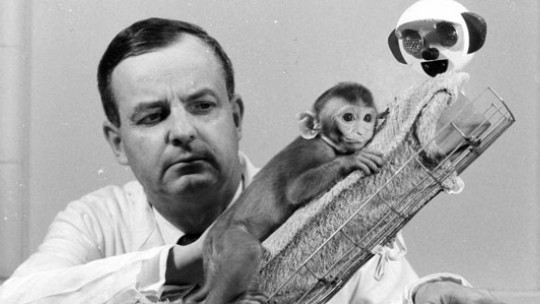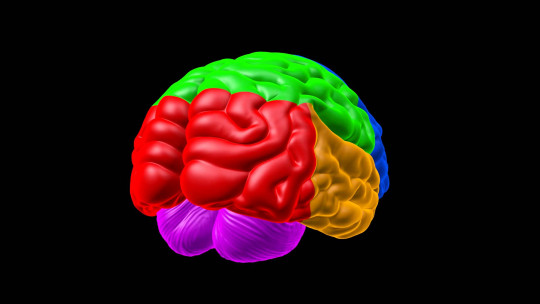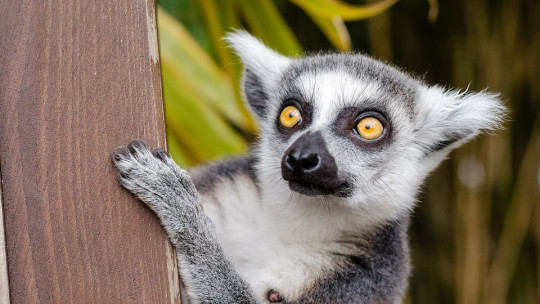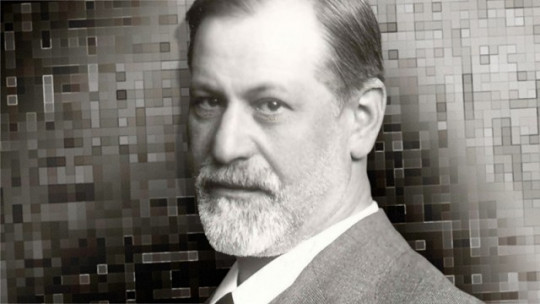When talking about psychology, many people may think of personality traits, mental disorders, or cognitive biases. In short, elements that we can relate to a single person: each person has their level of intelligence, the presence or absence of a diagnosed disorder, or a propensity to fall into certain tricks of the mind. However, there is a topic that is also widely addressed by psychology: the way in which interpersonal relationships change us.
The prevailing paradigms in psychology in the first half of the 20th century, which were psychodynamics born with Sigmund Freud and behaviorism defended by BF Skinner, supported the idea that the foundation of affection between mothers and their young sons and daughters is nutrition and, more specifically, breastfeeding. In their own way, each of these two psychological currents, so different from each other, in most of their approaches proposed the same idea: that babies and mothers began to engage in affective behaviors thanks to the former’s need to be fed. Right after birth, the main role of mothers was to provide food for their offspring.
However, psychologists John Bowlby and, later, Harry Harlow, dealt a serious blow to this theory. It is thanks to them that today we know that affection in its purest and most literal sense is a fundamental need for boys and girls. Specifically, Harry Harlow’s monkey experiment on maternal deprivation is an example of this.
The precedent: Bowlby and attachment theory
In the mid-20th century, an English psychiatrist and psychologist named John Bowlby carried out a series of investigations framed in what is known as attachment theory. This is a framework for debate in which the psychological phenomena behind our way of establishing emotional ties with other beings are explored, and in it the way in which fathers and mothers relate to their babies during the first months of the latter’s life.
The reason for this interest in the early stages of bond formation is simple: It is assumed that the way in which children strengthen ongoing relationships Being close and showing affection to others will influence their development into adulthood and will have a possibly lifelong impact on several of their psychological characteristics.
Bowlby’s investigations
Through several studies, John Bowlby concluded that the regular availability of maternal affection to each baby is one of the most important needs for its correct growth.
In part, this was based on his beliefs: Bowlby took an evolutionary approach, defending the idea that specially selected genes are expressed in both mothers and newborns to cause the two to form a strong emotional bond. That is, he believed that the establishment of maternal attachment was genetically programmed, or at least a part of it. Furthermore, he maintained that the strongest bond that any person can establish is the one based on the relationship that he had with his mother during the first years of his life.
This phenomenon, which he called monotropy, it was not established whether this exchange of affectionate gestures accompanied by physical contact (classically, during breastfeeding) occurred after the baby’s second year of life, and not before. That is to say, that the maternal deprivationthe absence of regular contact with a mother who provided affection during the first months of life, was very harmful because it went against what our genetics would have programmed us for.
What did these studies consist of?
Bowlby also relied on empirical data In this sense, he found some data that reinforced his theory. For example, through research commissioned by the World Health Organization on children separated from their families because of World War II, Bowlby found significant evidence that young people who had experienced maternal deprivation due to living in Orphanages tended to have intellectual delays and problems successfully managing both their emotions and the situations in which they had to interact with other people.
In similar research, he observed that among children who had been confined for several months in a sanatorium to treat their tuberculosis before turning 4 years old, They had a markedly passive attitude and became angry much more easily than the rest of the young people.
From that point on, Bowlby continued to find data that reinforced his theory. He concluded that maternal deprivation tended to generate in young people a clinical picture characterized by emotional detachment from other people. People who had not been able to form an intimate bond with their mothers during their early years were unable to empathize with others, because they had not had the opportunity to connect emotionally with someone during the stage in which they had been sensitive to this type of learning
Harry Harlow and the Rhesus monkey experiment
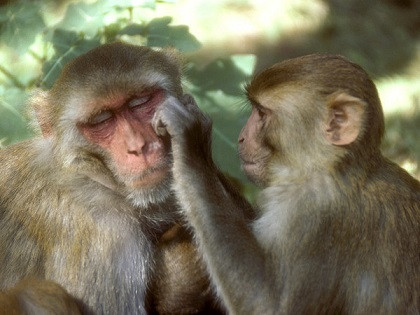
Harry Harlow was an American psychologist who during the 1960s set out to study Bowlby’s theory of attachment and maternal deprivation in the laboratory. To do this, he carried out an experiment with Rhesus monkeys that under current ethical standards would be unfeasible due to the cruelty involved.
What Harlow did was, basically, separate some baby macaques from their mothers and observe how their maternal deprivation was expressed But he did not limit himself to passively observing, but introduced into this research an element with which it would be easier to know what the baby macaques were feeling. This element was the dilemma of choosing between something like physical contact related to affection and warmth, or food.
Replacing the mother
Harlow introduced these babies into cages, a space they had to share with two artifacts. One of them was a wire structure with a full baby bottle built in, and the other was a figure similar to an adult macaque, covered with soft plush, but without a bottle Both objects, in their own way, simulated being a mother, although the nature of what they could offer the offspring was very different.
In this way, Harlow wanted to test not only Bowlby’s ideas, but also a different hypothesis: that of conditional love. According to the latter, offspring relate to their mothers basically through the food they provide, which objectively is the most useful resource in the short term from a rational and “economicist” perspective.
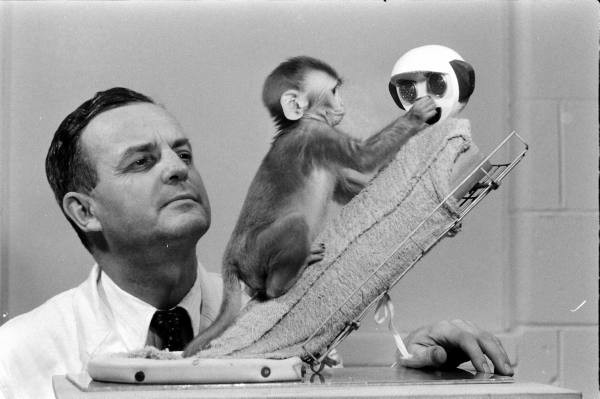
What was discovered
The result proved Bowlby right. The pups showed a clear tendency to cling to the plush doll, despite no food being provided The attachment to this object was much more noticeable than the one they professed towards the structure with the bottle, which was in favor of the idea that it is the intimate bond between mothers and babies that is really important, and not simple food.
In fact, this relationship was even noticeable in the way the hatchlings explored the environment. The plush doll seemed to provide a feeling of security that was decisive for the little macaques to decide to undertake certain tasks on their own initiative and they even hugged it more tightly when they were afraid. At times when some change was introduced in the environment that generated stress, the babies ran to hug the soft doll. And, when the animals were separated from this plush artifact, they showed signs of desperation and fear, screaming and searching all the time for the protective figure. When the plush doll was brought back within reach, they recovered, although they remained on the defensive in case they lost sight of this artificial mother again.
Causing isolation in monkeys
The plush doll and baby bottle experiment was of dubious morality, but Harlow went further by worsening the living conditions of some macaques. He did so by confining young of this animal species in closed spaces, keeping them isolated from any type of social or, in general, sensory stimulation.
In these isolation cages there was only one drinker, one feeder, which was a total deconstruction of the concept of “mother” according to behaviorists and Freudians. In addition, a mirror had been incorporated into this space thanks to which one could see what the macaque was doing, but the macaque could not see its observers. Some of these monkeys remained in this sensory isolation for a month, while others stayed in their cage for several months; some, up to a year.
The monkeys exposed to this type of experience already showed obvious alterations in their behavior after having spent 30 days in the cage, but those that remained for a full year were left in a state of total passivity (related to catatonia) and indifference towards the others from which they did not recover. The vast majority ended up developing sociability and attachment problems when they reached adulthood, they were not interested in finding a partner or having children, some did not even eat and ended up dying.
Negligent mothers… or worse
When Harry Harlow decided to study the maternal behavior of macaques that had been subjected to isolation, he encountered the problem that these female monkeys did not become pregnant. To do this he used a structure (“the rape rack”) in which the females were fixed with straps, forcing them to be fertilized.
Subsequent observations showed that these females not only did not perform the typical tasks of a mother of their species, ignoring their young for most of the time, but sometimes they even mutilated their young. All this, in principle, due to maternal deprivation, but also due to social isolation, during the first months of life.
Conclusions: the importance of attachment
Both the research of John Bowlby and the experiments of Harry Harlow are currently widely taken into account, although the latter are also a case of clear torture of animals, and due to their ethical implications they have received strong criticism
Both experiences led to similar ideas: the effects of the absence of social interactions that go beyond the most immediate biological needs and that are linked to affective behavior during the first stages of life usually leave a very serious and difficult mark. erase in adult life.

